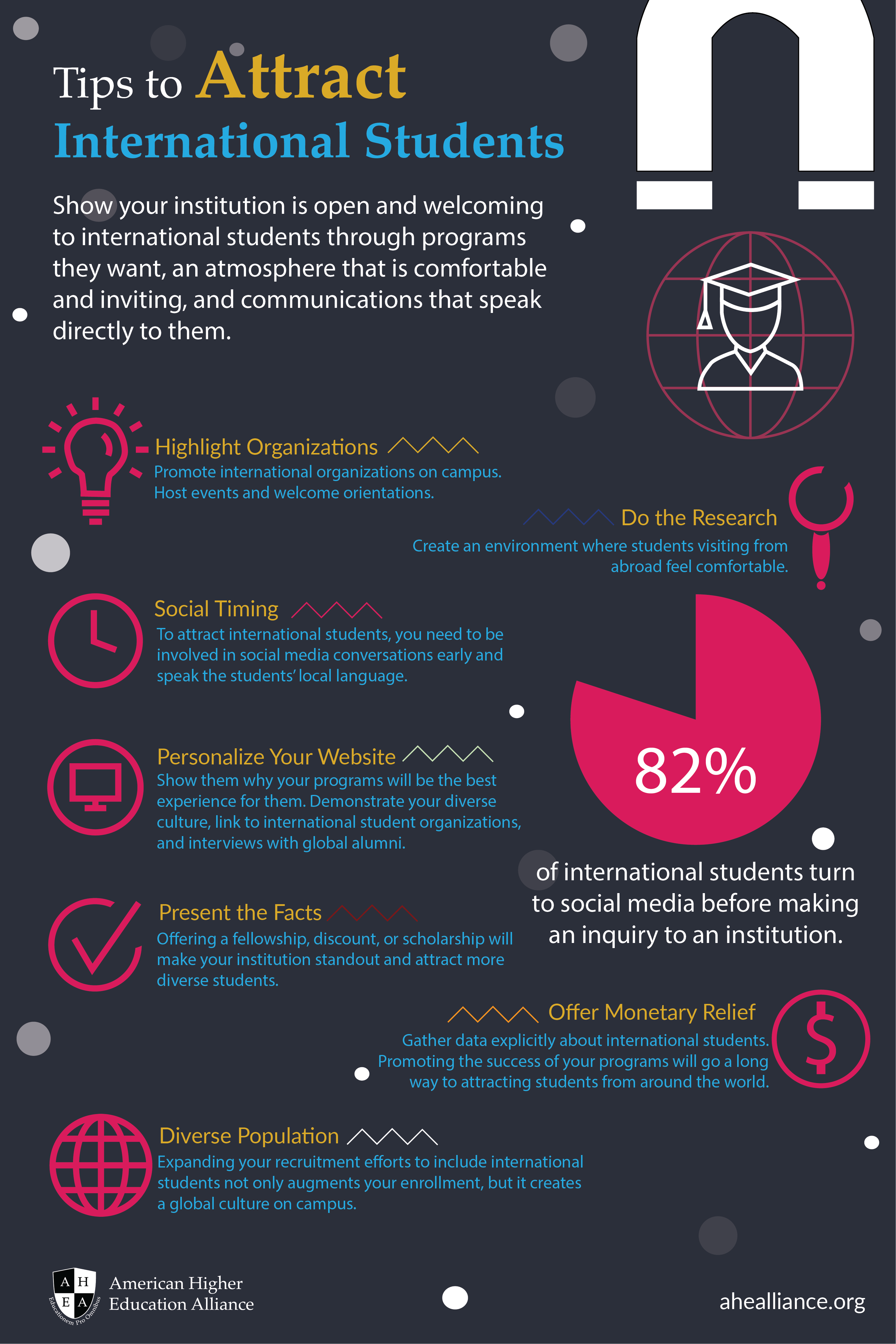
Tips For Attracting International Students

We live in a global economy. Students want a higher education that replicates this interconnected world. U.S. colleges and universities can help students experience a more global education by including international students on campus. They add diversity and a connection to other cultures, broadening your students’ minds and understanding of the world.
So, what can you do so your institution is attractive to international students?
The key to making your institution stand out is showcasing an inviting environment where students can learn and feel included. Here are some tips to help you do that.
Highlight Organizations
Helping international students feel welcome and at home is important to attracting them. Include the different international organizations in your communications and on your website. Ask the organizations to hold webinars and join in social media highlighting how wonderful your institution is. And once the international students enroll, help them get involved with the groups. Hold events and welcome orientations.
Do the Research
Niche is the Yelp for U.S. institutions. It includes reviews from millions of students all over the world revealing what it’s like to attend your school and others. This is a data-mine of golden insight. Study this information – the good, the bad, and the ugly. It will divulge what international students like in a school and you can use that information to attract global learners through your marketing. It can be simple. For example, if you find international students overwhelmingly complain about the food, offer more authentic international dishes and mention it in your communications. Create an environment where students visiting from abroad feel comfortable.
Social Timing
We know from the last blog, that we need to use the social media that students are currently using. That can be a daunting task, since it changes frequently. Plus, different countries use different sites. For example, China uses WeChat and Weibo. Just as essential as knowing what to use, is when to communicate. According to the International Student Survey, 82 percent of international students turn to social media before making an inquiry. To attract international students, you need to be involved in social media conversations early and speak the students’ local language. A direct translation simply is not enough.
Personalize your Website
Does your international page on your institution’s website jump right to visas, travel, and applications? The site needs to reflect your campus’s personality and the benefits that are specific to international students. Show them why your programs will be the best experience for them. Demonstrate your diverse culture, link to international student organizations, and interviews with global alumni.
Just the Facts
Today’s students and parents want the facts. They want to know how many students graduated within four years. How many of your students get a job within three months of graduation? And so on. International students are no different. Gather data explicitly about international students. How many of your international graduates get jobs in the U.S. and/or in their native countries? You can use this valuable information in social media, on your website, and throughout your marketing content. Promoting the success of your programs will go a long way to attracting students from around the world.
Offer Monetary Relief
Most schools can guarantee full tuition from international students. But just like on the domestic front, the rising cost of higher education is also deterring students living abroad. Offering a fellowship, discount, or scholarship will make your institution standout and attract more diverse students.
Attracting a Diverse Population
Expanding your recruitment efforts to include international students not only augments your enrollment, but it creates a global culture on campus. You can accomplish this by demonstrating how your institution welcomes international students. Highlight international groups and organizations on campus and ask them to act as ambassadors. Do some research to find out the best way to adapt the programs to create a more inclusive environment. Be on social media early so students are aware of the benefits of your institution. Demonstrate diverse cultures on your website. Promote data about your international students throughout communications. Offer tuition discounts or scholarships specifically for students who may attend from other countries.
Bottomline – show your institution is open and welcoming to international students through programs they want, an atmosphere that is comfortable and inviting, and communications that speaks directly to them.
